ESCAPE
A nostalgic meander through the grand old churches of the Karoo
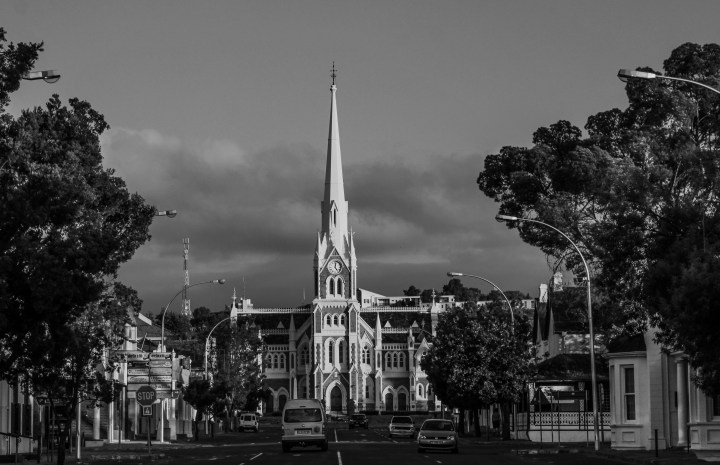
Where else but the Karoo will you find such a treasure of classic architecture, sweeping style and good, old-fashioned country church legends? With beautifully carved wood, roosters and personalised pew cushions to boot.
Even a self-confessed part-time “Christmas Day Anglican” like me can stand at the base of a typical Karoo Moederkerk and look up in wonder.
You can’t mistake these Platteland places of worship. They’re the ones – mostly built a century or more ago – that look like impregnable sandstone fortresses. All dolled up with follies and faux, buttresses and beautifully carved wooden doors, they mostly come with fascinating backstories and personalised pew cushions.
Here in my hometown of Cradock, I go walking just as the morning sun hits the steeple of the Moederkerk, which looks so much like the Neoclassical-style St Martin-in-the-Fields in Trafalgar Square, London – albeit a rather cleaner version. And, just like its English counterpart, this church seems to loom over all its neighbouring buildings like a grand dame. I like to call it the Taj Mahal of the Karoo, because it was built out of love and it was built to last.
The Karoo legend of the Cradock Moederkerk is that the dominee’s wife was English and pining for her home country. This influenced the church leaders in choosing a design that pays homage to the genius of architect James Gibbs in its Corinthian portico, clock and Gothic steeple.
“Well, we do know she was English,” says my friend Jurie Taljaard, a long-time Cradock man, who clearly only really believes the front half of the love story of the Moederkerk.
There was a hint of skandaal in September 1868, as a massive crowd thronged about at the opening ceremony of this exciting new church in Cradock. The building contractor refused to hand over the keys, claiming he had not been paid in full. Finally, after an hour’s delay and some heated words, a group of leading Cradock burghers pledged the shortfall, and the keys were made available.
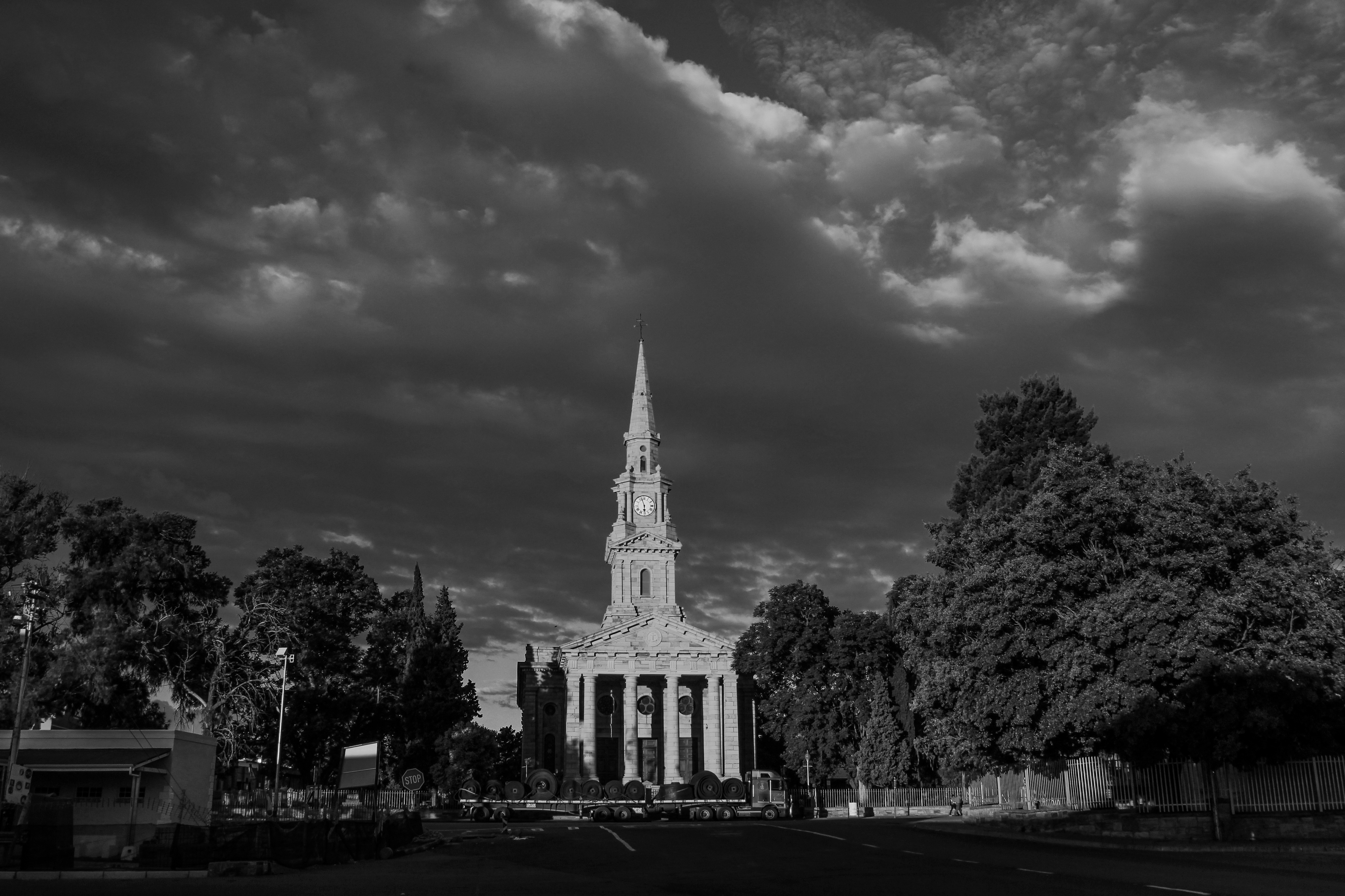
The Cradock Moederkerk – if you’ve been to Trafalgar Square, London, you’ll recognise the architecture. Image: Chris Marais
Graaff-Reinet
When you drive west from Cradock, over the Wapadsberg and into Graaff-Reinet, the Victorian Gothic Grootkerk commands instant respect. Designed and built (at a cost of £17,000) along the architectural lines of Salisbury Cathedral in England, many regard it as the most graceful house of worship in the Karoo.
Its predecessor, the third Dutch Reformed church to be built in Graaff-Reinet, was ill-fated. The man in charge of replacing the thatched roof with corrugated iron fell through the ceiling to his death; a fire broke out; the clock-winder narrowly escaped an untimely end when a 40kg lump of metal came hurtling down from the belfry, just missing him.
CG Henning, in his landmark book, Graaff-Reinet A Cultural History, records that in the early 1880s, most of the 2,000-strong congregation pledged £5 each towards the building of a grand new kerk.
Nieu-Bethesda
This little village in the lap of the Sneeuberge is the perfect example of Victorian-era settlement in the agricultural rural areas of South Africa: first came the formation of a church congregation, then the tuishuise (townhouses) and then the seriously big church building.
In the mid-1870s, a few years before Nieu-Bethesda was officially established, local Sneeuberg farmers used to worship in the land owner’s wagon house. The gleaming white Moederkerk you see today was only built in 1905.
Nieu-Bethesda had fortunate beginnings: the Gats River that flows through the valley was fed by perennial mountain streams, some of which still flow.
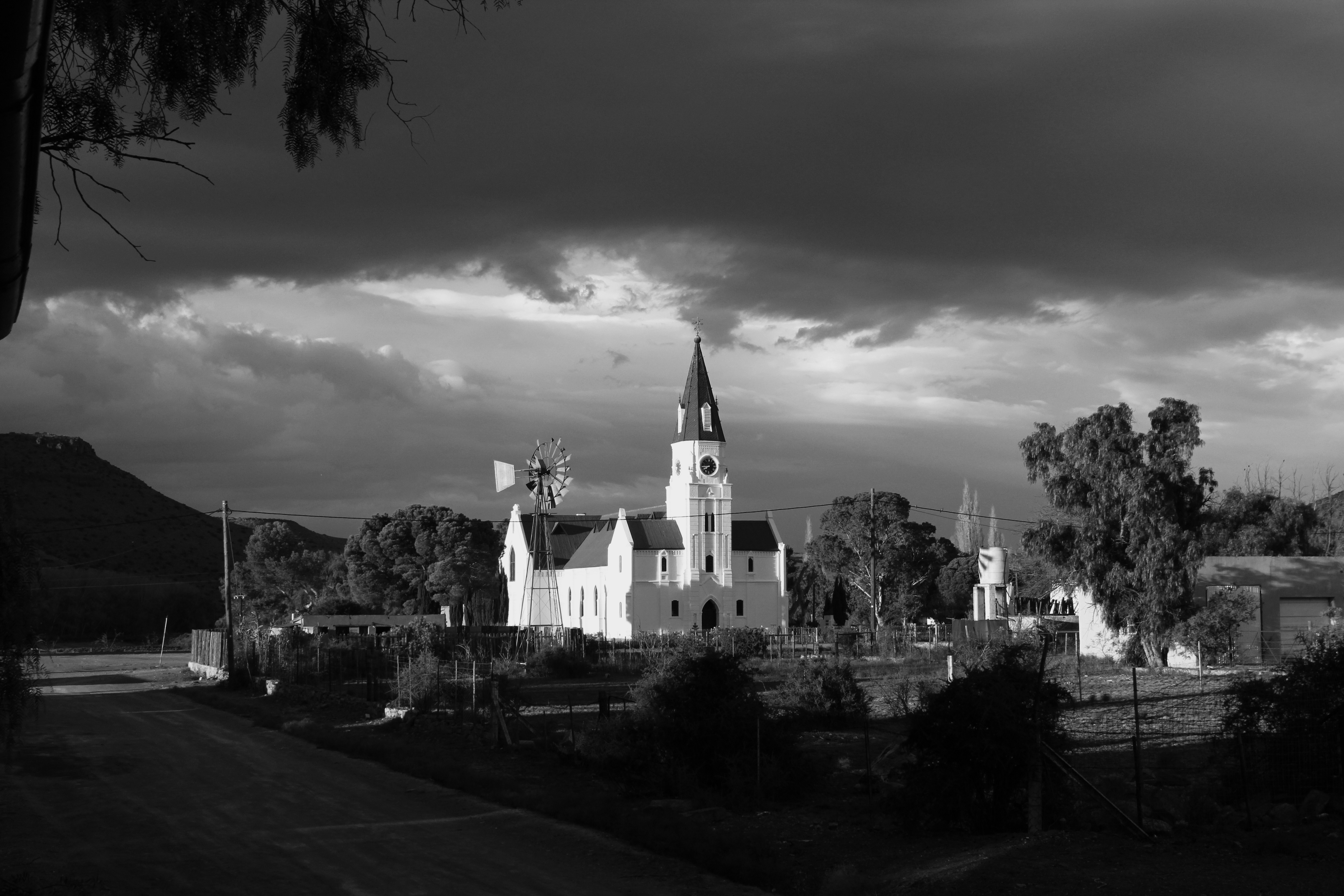
The Nieu-Bethesda DR Church serves the local farming community. Image: Chris Marais
Rietbron
Now head due south-east to the dusty little ville of Rietbron, for one major reason: to see the only steeple in the country that sports a springbokkie. Normally there’s a rooster on top. The kerk in Koffiefontein up on the Horizon Route boasts a fish – because a long-gone dominee was a keen angler. But mostly, it’s roosters. Except for Rietbron, where the land is flat and Antidorcas marsupialis (the noble springbok) rules.
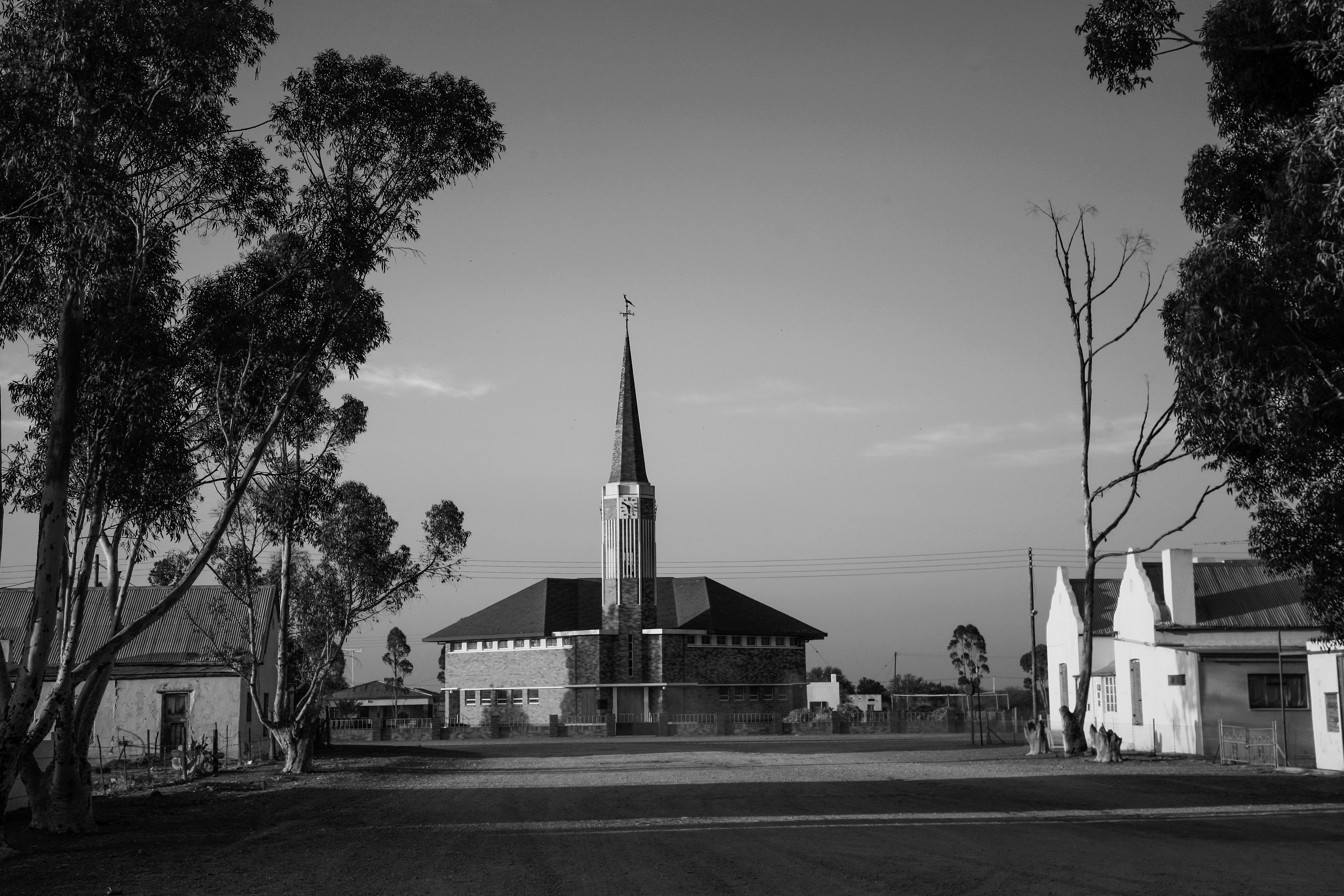
The Rietbron Mother Church, with its springbokkie steeple. Image: Chris Marais
Merweville
Over the decades of visiting Karoo dorpies, we have collected the words of church kosters (vergers) in passing – much as we do the thoughts and impressions of Platteland mechanics, farmers and padstal owners.
In Merweville back in 2008, we met Jan Mocke, the koster at the time. He told us the town’s grand old Moederkerk had been built in 1916, out of “Beaufort stone and wood from a ship that sank”. Once a year, this church is the site of the Dankfees (Thanksgiving Festival), which attracts the faithful from all over South Africa.
“Two weeks before the fees, our farmers start processing all the meat,” he said. “Apart from various cuts and pie ingredients, they also supply the meat for the Friday night braai, which is followed by a concert.”
On Saturday morning, the church grounds become a massive marketplace, with rows of tables groaning with baked goods, meats, knitted items and fresh produce. And the proceeds go to the poor.
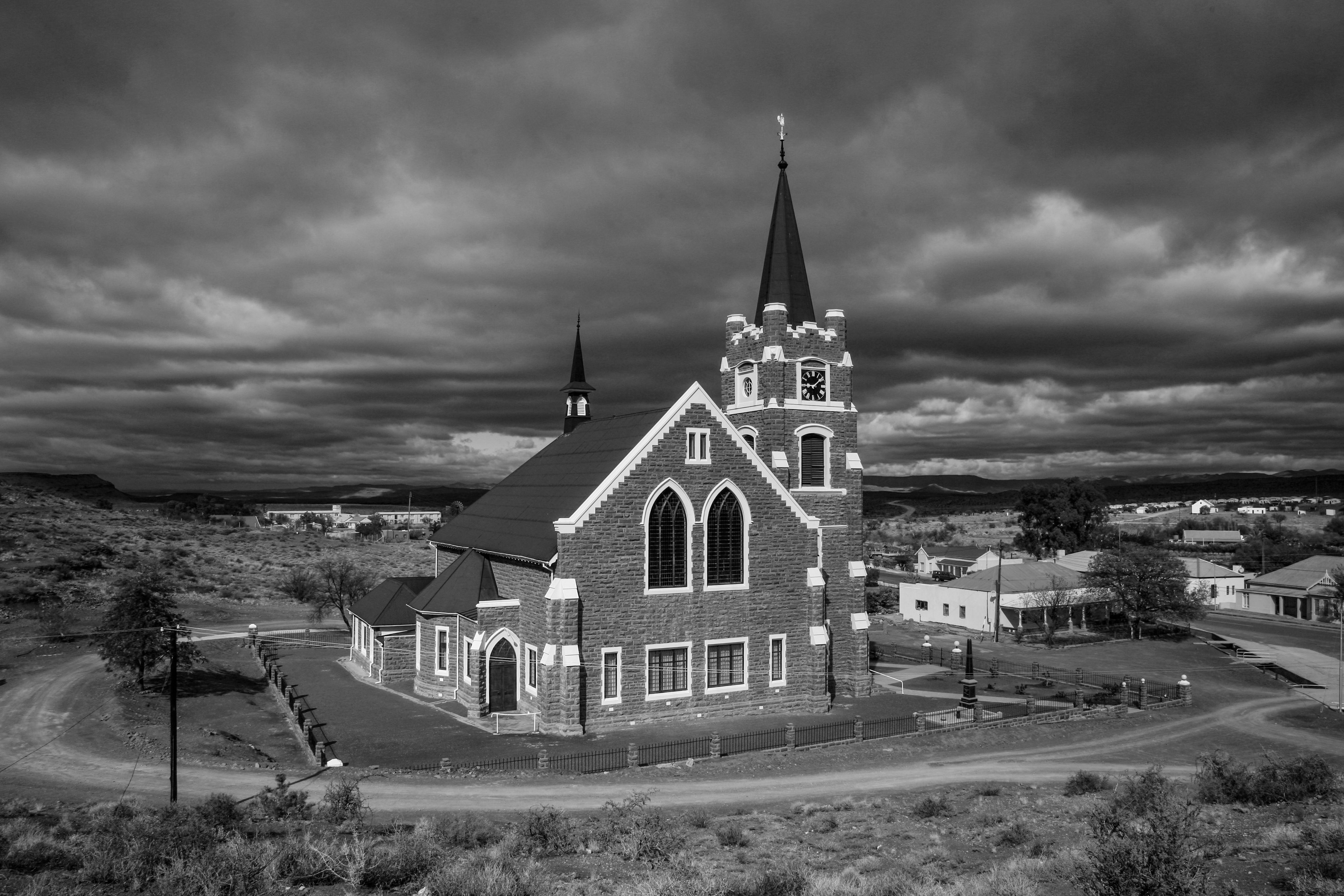
The Merweville Moederkerk, “built in 1916 out of Beaufort stone and wood from a ship that sank”. Image: Chris Marais
Hanover
Stand at the top of a little hill called Trappieskoppie, look south, and you will see the Northern Cape village of Hanover in all its old glory.
In the midst, like a queen bee, stands the NG Mother Church which, when opened in 1907, encouraged the faithful to bring their own chairs to services. Before the era of electricity, the church chandeliers were powered by methane gas sourced from sheep dung.
In its time there has been no shortage of colourful dominees and kosters in Hanover. The first dominee had his pastorie (manse) built in a “B-for-Bethlehem” shape. Another dominee called Thomas Francois Burgers tried his own individualist brand of Christianity on the locals but did not impress by his refusal to believe in the literal truth of the Bible.
He was duly expelled from the church and went on to become the South African Republic’s fourth President.
As far as Hanover’s vergers go, the most famous one was Tannie Mollie Kleingeld, who insisted on climbing the stairs to the steeple until the age of 86. She served for more than 30 years before calling it a day.
What do vergers do? We asked verger Mike Burger, a few years ago.
“Clean the church, mind the garden, set out tables, wind the clocks and ring the bell on Sunday,” Mike replied. And then he went off to do just that.
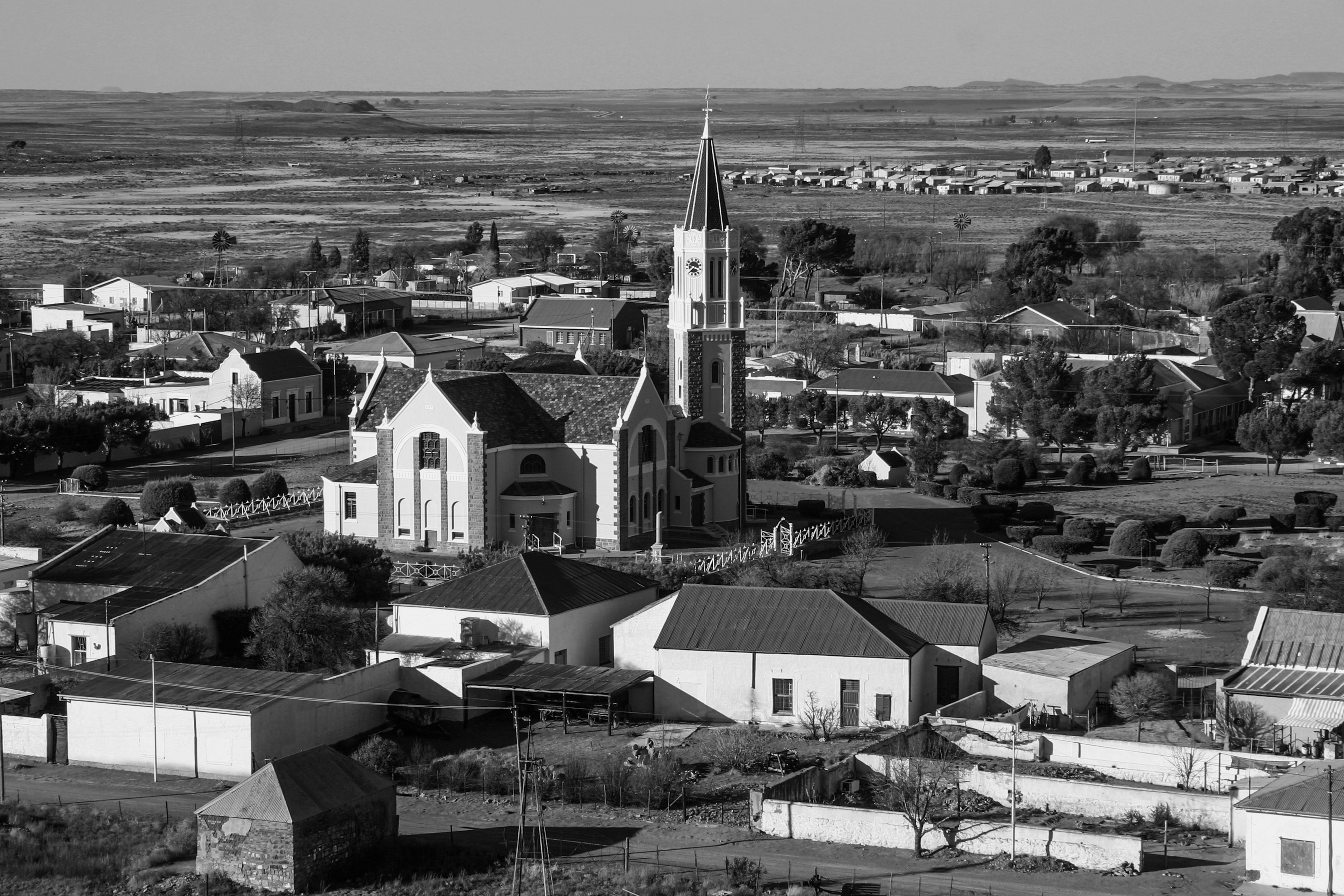
The chandeliers of the Hanover DR Church were once powered by methane gas sourced from sheep dung. Image: Chris Marais
Richmond
A shifting spanner left in the wrong place on a moving train caused more than 3,000 volts of electricity to shoot into loco driver Ockert Botha, throw him to the floor and permanently damage his hearing. So what do you do with a nearly deaf train driver? You board him, hand him a “package” and wish him well.
Ockert packed his little family up, left Johannesburg’s East Rand and came to live in Richmond, Northern Cape. His capable hands were not idle for long. Ouma Theron, down at the retirement home, had cancer, which kept her awake and in pain most nights. She really hated having to switch on the room light to check the time. So she asked Ockert Botha to please fix the clock on the Richmond Moederkerk steeple. Ockert obtained the necessary permissions, climbed up the tower, repaired the hammer that strikes the bell and gave the gears a decent oiling. Ouma Theron died a happy lady, only 22 days short of her 100th birthday.
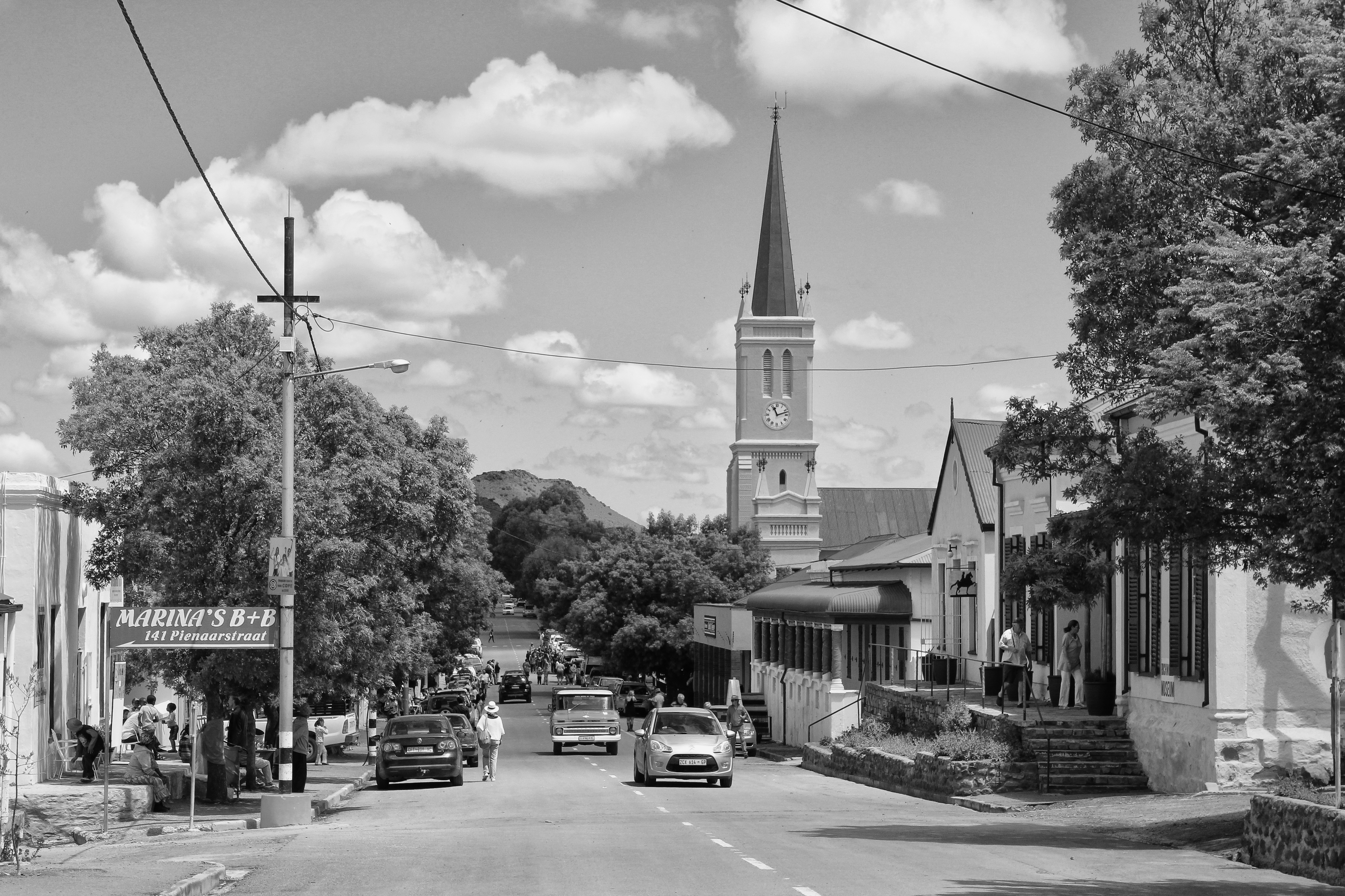
The bells of the Richmond DR Church were fixed by retired steam train driver Ockert Botha. Image: Chris Marais
Williston
On one of our first visits to the Northern Cape village of Williston, we met the local koster, Attie Engelbrecht, and asked him why his church clock was on the blink.
“That’s because, in June 2004, I nearly died up there,” said Attie.
“I was setting the clock when I had an aneurysm and just fell. I bounced off the stone edging the steeple inside and burst my vertebra, cracking open my head. They took me by ambulance to Cape Town, and I was in and out of a coma all the way. I was in hospital for three months. Ever since then, the clock has stopped.”
But there’s more to this story. We asked Attie whether the clock stopped at the exact moment of his aneurysm. Not quite, he replied. The clock was keeping what he called “owl time”.
“A pair of small owls sometimes sit on the clock’s hands, and when they fly off, the hands move for a while,” he said.
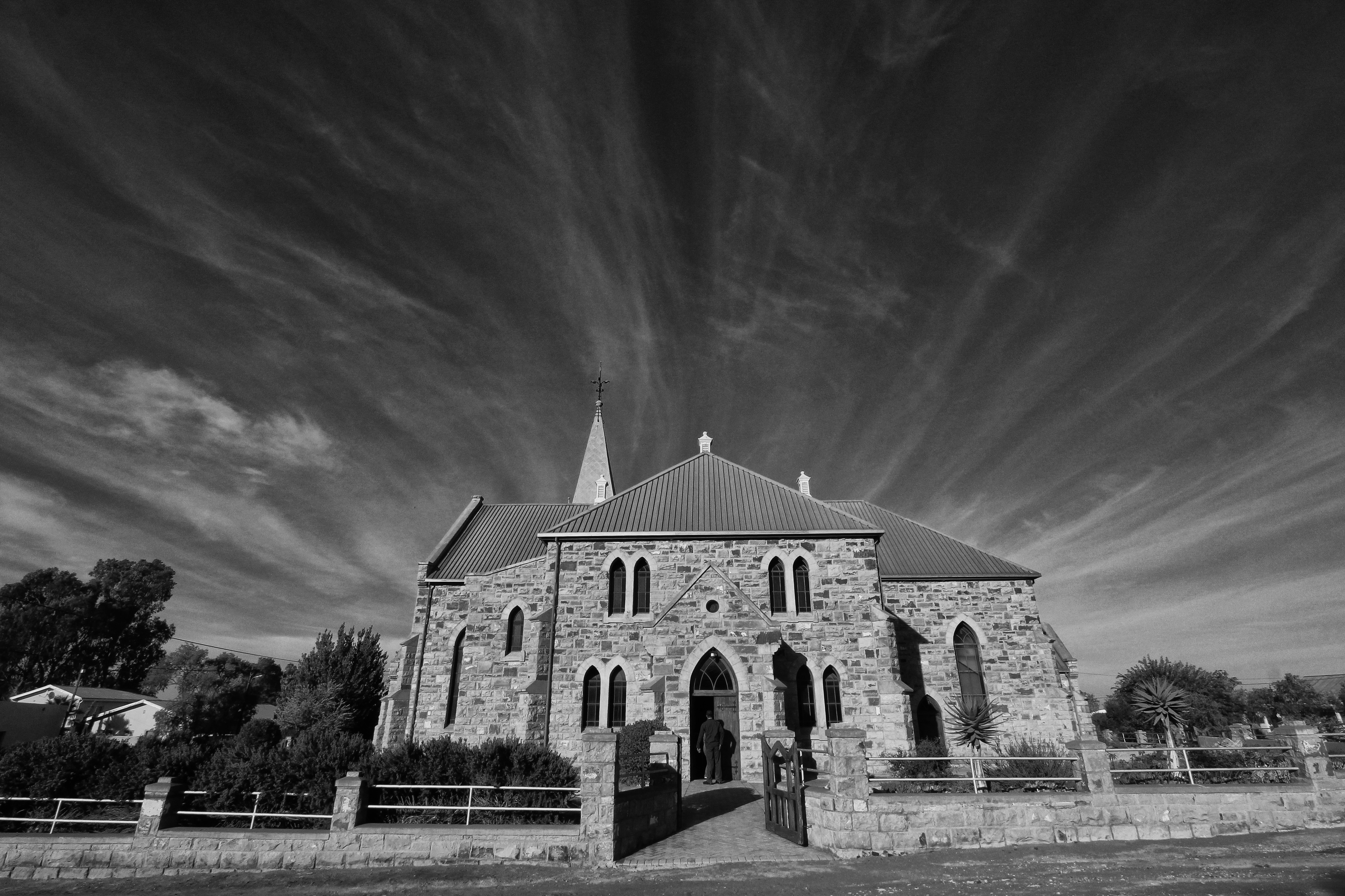
The aDR Church – it’s clock keeps “owl time”. Image: Chris Marais
The Vosburg cushion
The Northern Cape oasis village of Vosburg, famous for its shady lanes, sports a Moederkerk that could be the centrepiece of a Bavarian folk tale.
As we strolled around it one morning, we had the dizzying experience of watching the hands of the church clock suddenly spin around to tell the right time. Who was up in the tower of this extraordinarily beautiful church?
It turned out to be Johan Jansen van Rensburg, a fourth-generation farmer in the region, who had volunteered to service the clock and keep it wound up and accurate. In fact, while we were there, cars were gathering for a church meeting at which a resolution would be taken to wind the clock twice a week instead of just once.
It’s a huge church, more than a century old, with a paltry congregation numbering around 100. But each church member has his or her own favourite seat, often claimed by the placement of a cushion with the owner’s name embroidered boldly on one side.
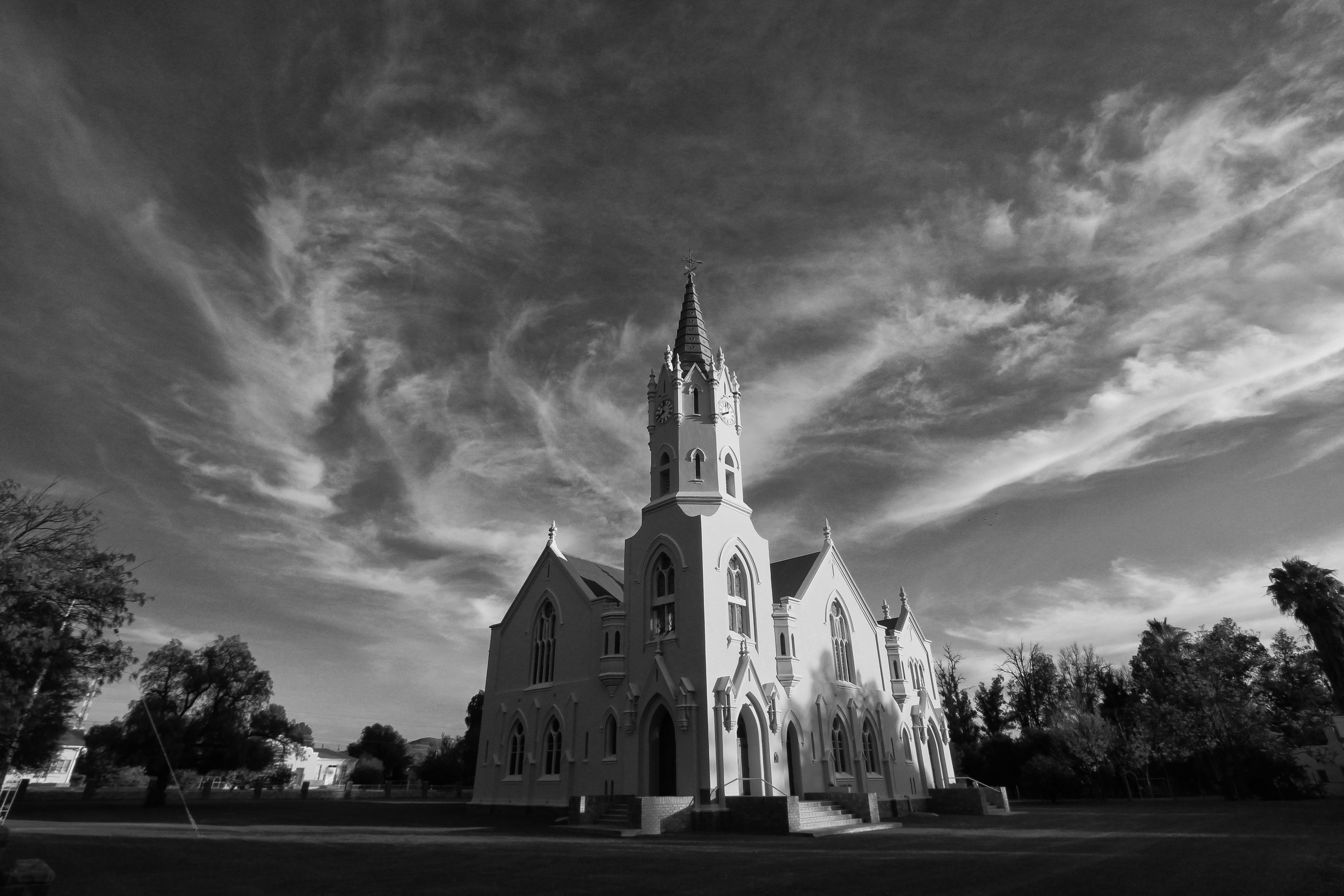
The Vosburg DR Church – a local farmer keeps the clock honest. Image: Chris Marais
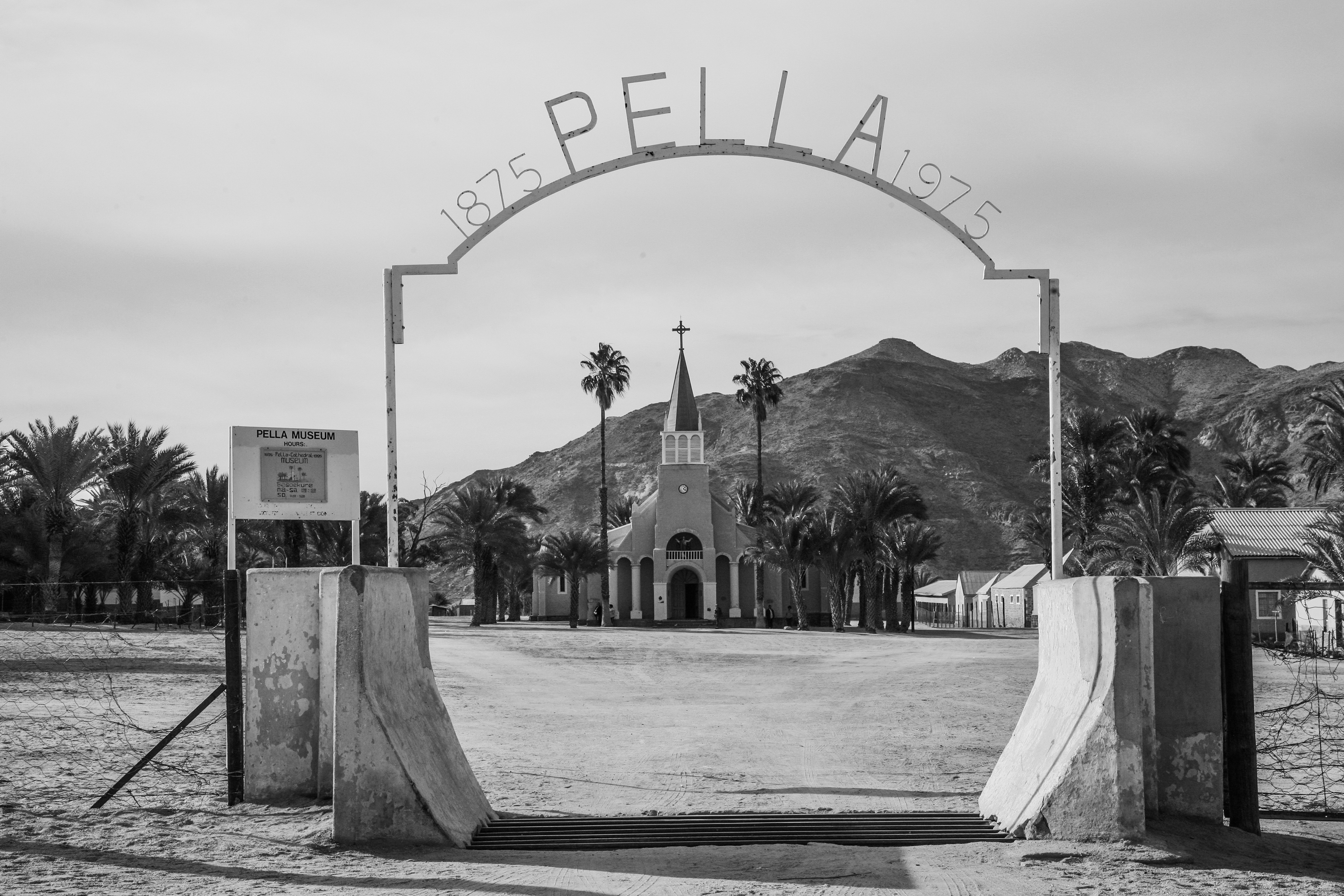
Pella Cathedral in Bushmanland – built by enterprising priests imported from Europe. Image: Chris Marais
Cathedral in the desert
Pella Cathedral is a phenomenon that was built back in the mid-1880s by a bunch of French missionaries who initially had absolutely no idea what they were doing. They did, however, have a copy of Encyclopédie des Arts et Métiers which contained details of how to construct such a building and, within seven years, they finished it. More than 200 cartloads of sand, 400 wagonloads of stones, 200,000 bricks, 350 bags of slaked lime and hundreds of wagonloads of willow wood went into the construction of this amazing place of worship.
In his book, Bishop for the Hottentots, Bishop John Simon recalls an incident in which a member of the Order, a Brother Leon, would cut wood for the cathedral furniture and fittings from trees he found on the Orange River islands.
“He often encountered enormous monkeys and baboons that seemed to reproach him for plundering their home,” Bishop Simon writes. “When he swam across the Orange River they would accompany him, pouring insults on him after their own fashion.
“They would seize his tools if he set them down for a moment, and take them away into the forest. When Brother Leon finally found his implements, he usually had to spend half an hour cleaning them before he could start using them again.”
Today, the elegant, sandy-toned cathedral still stands as a tribute to the men of the order of St Francis de la Sales who, incidentally, is the patron saint of writers.
Before Pella was Pella, Pella was Cammas Fonteyn. In 1814, the feared Nama raider Jager Afrikaner attacked the Warmbad Mission in Great Namaqualand. The mission survivors fled south to Cammas Fonteyn, where the resident London Missionary Society minister renamed it Pella, after the ancient Palestine refuge for Christians crossing the Jordan River in flight. DM/ML
This is an extract from Karoo Roads II – More Tales from the Heartland, by Julienne du Toit and Chris Marais.
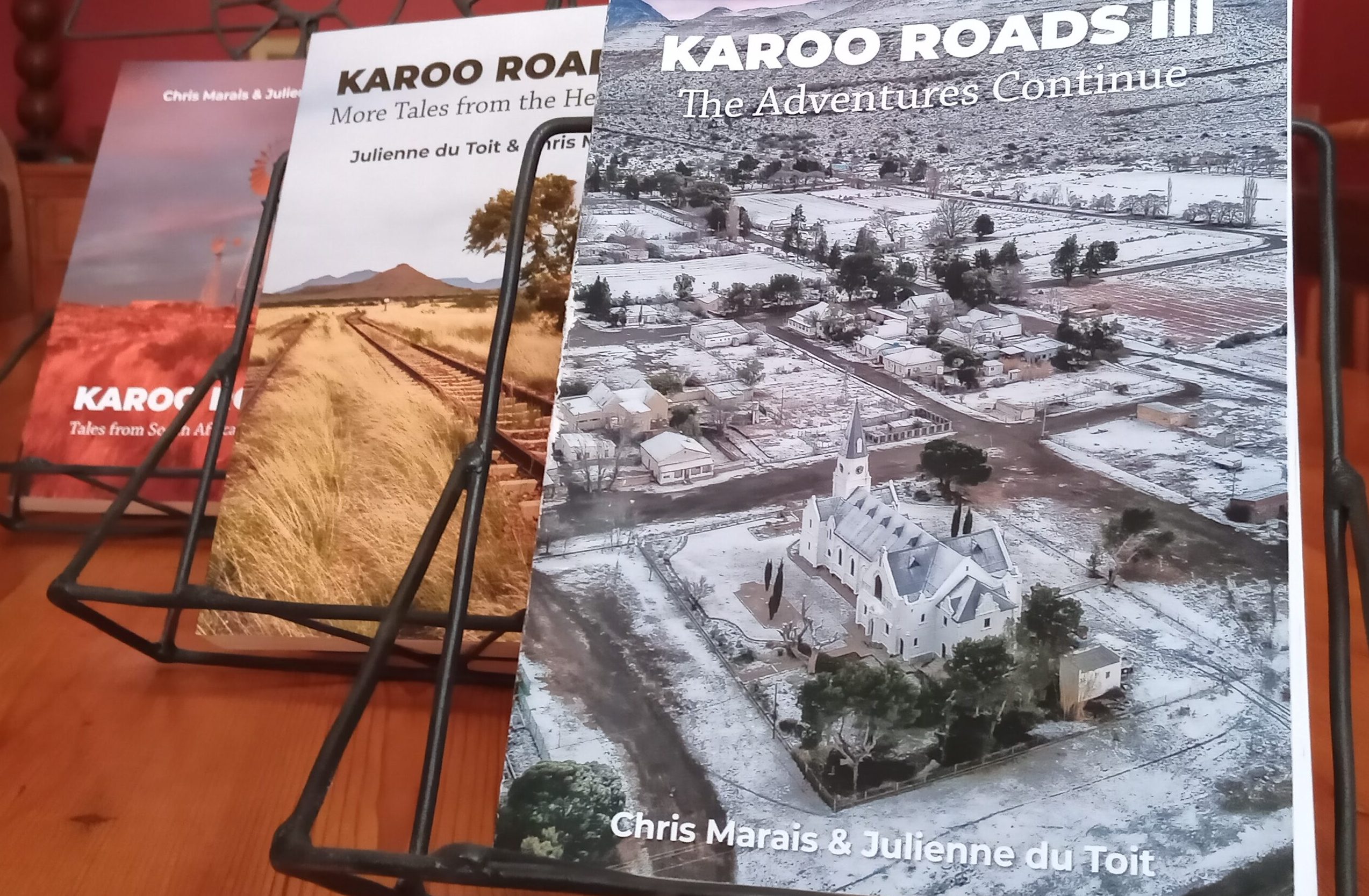
‘Karoo Roads’ Collection. Image: Chris Marais
For an insider’s view on life in the Dry Country, get the three-book special of Karoo Roads I, Karoo Roads II and Karoo Roads III (illustrated in black and white) for only R800 including courier costs, in South Africa. For more details, contact [email protected]















 Become an Insider
Become an Insider
Such architectural treasures, so beautifully recorded
The architect of the current Graaff Reinet Kerk was my gt gt grandfather, James Bisset, from Aberdeen, Scotland. He had an interesting career, just Google: Bisset, James -Artefacts
His sons were also well-known sportsmen.